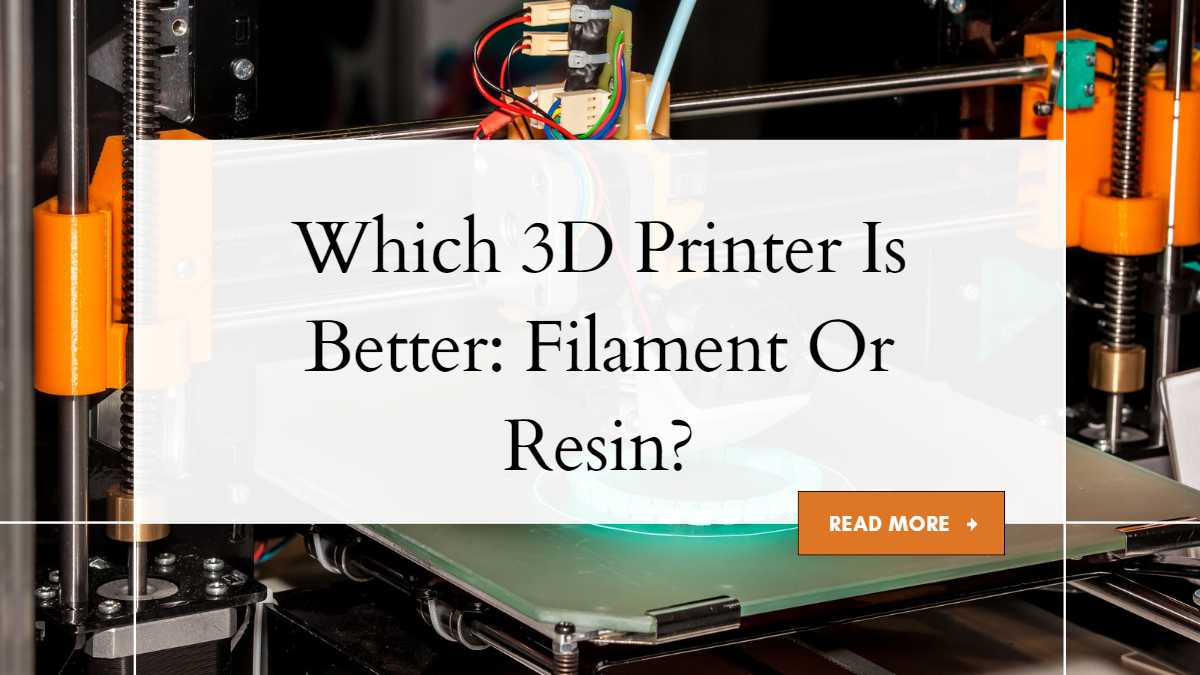Last Updated on
Thinking of buying a 3D printer but don’t know which type to choose? Don’t worry; we’ll help you understand the differences between filament and resin 3D printers.
Let’s get into the details, shall we?
What’s a Filament 3D Printer?
A filament 3D printer is a device that uses a thermoplastic filament as the primary material. The filament gets heat and melts in the printer’s nozzle. It then extrudes to create the 3D object layer by layer.
Pros & Cons of Filament 3D Printers
Filament 3D printers are ideal for creating large, durable objects. They are cheaper to operate than resin printers, making them a better choice for hobbyists or those on a tight budget. Filament printers are more forgiving of mistakes than resin printers, making them easier for beginners.
These 3D printers have a limited resolution, meaning the final object may not have as much detail as a resin printer. The final product may have a visible layer line, which can be unsightly. Finally, filament printers can produce toxic fumes during printing, so they should only be used in a well-ventilated area.
What’s a Resin 3D Printer?
A resin 3D printer uses a liquid polymer cured with UV light to create the final object. The printer’s build platform is lowered into a vat of liquid resin, and a UV light source is used to harden the resin layer by layer.
Pros & Cons of a Resin 3D Printer?
Resin 3D printers are ideal for creating highly detailed objects with a smooth finish. The final product is of high quality and does not have a visible layer line. Additionally, resin printers are more precise than filament printers, meaning the final object will have a higher resolution.
These 3D printers are pricier to operate than filament printers. The resin is pricier than filament, and printing can take longer. Finally, the printer requires more maintenance than a filament printer, as the resin can clog the nozzle and needs to be cleaned regularly.
Which 3D Printer is Better?
Both filament and resin 3D printers have their advantages and disadvantages. If you’re a hobbyist or on a budget, a filament printer may be your best choice. However, a resin printer is the better choice if you must create highly detailed objects with a smooth finish.
Conclusion
We hope this article has helped you understand the differences between filament and resin 3D printers. Ultimately, choosing between the two depends on your specific needs and budget.
Whether you select a filament or resin printer, you’ll enjoy creating your 3D objects.



